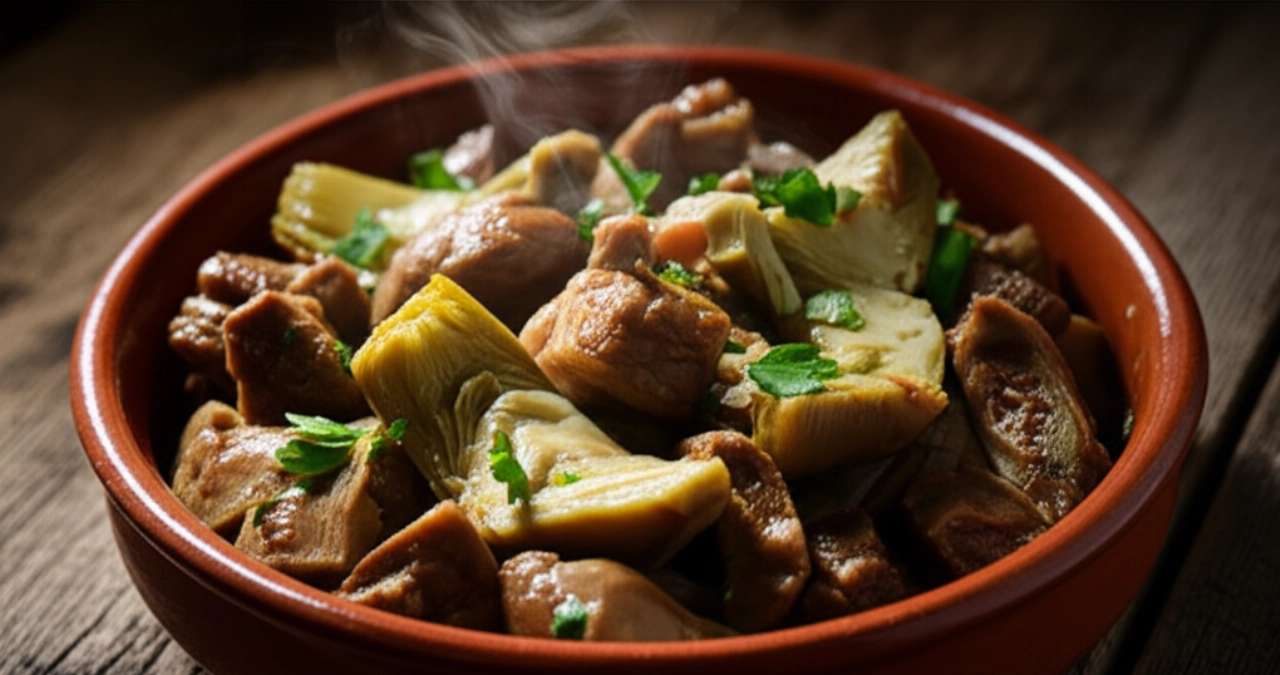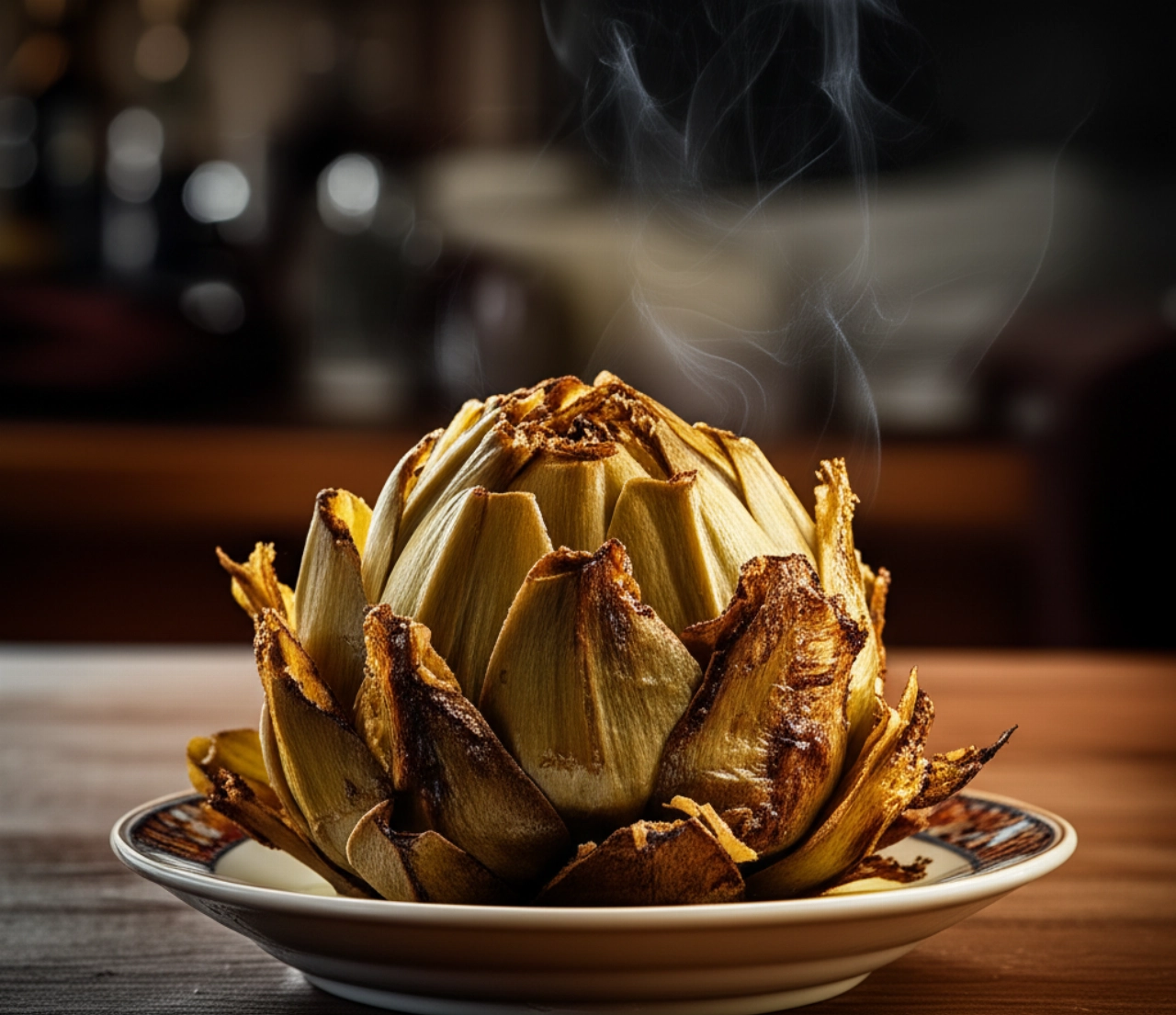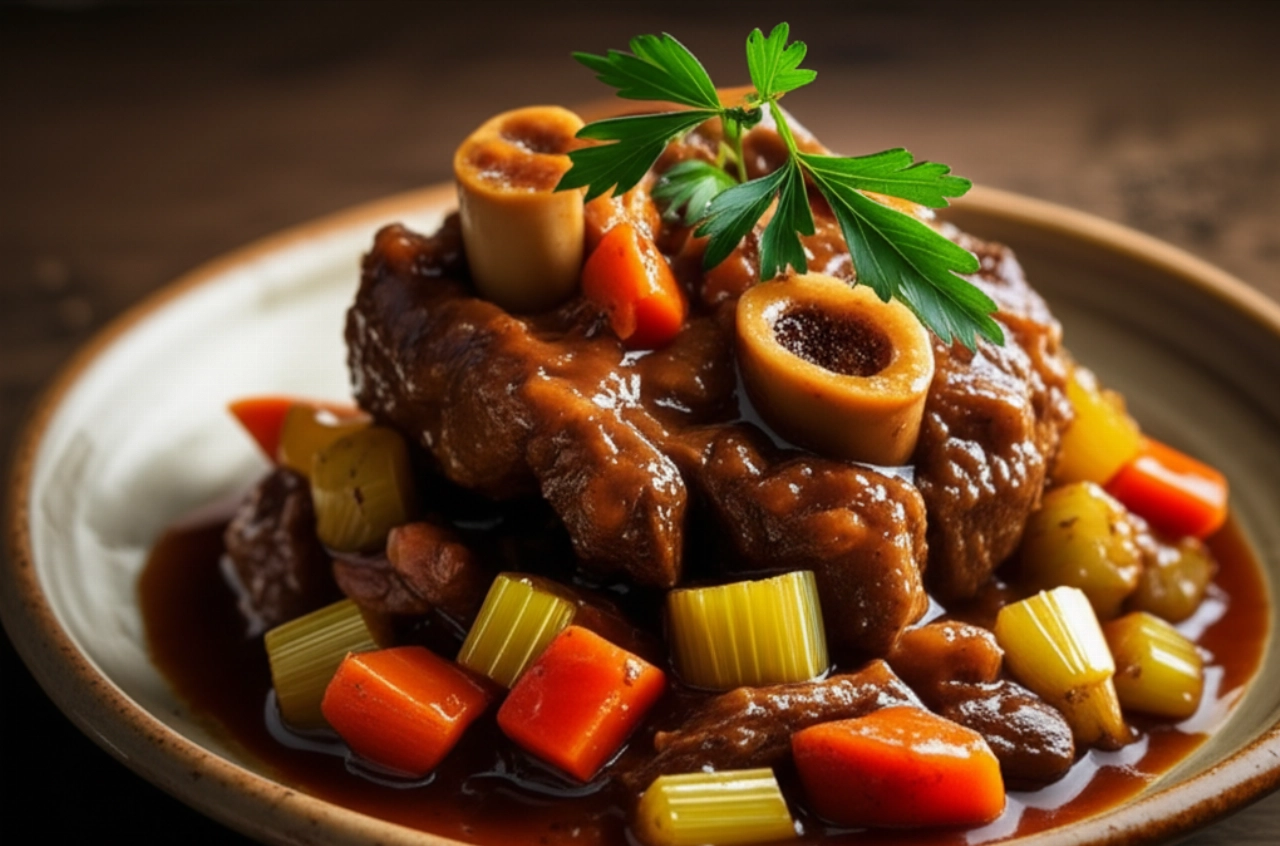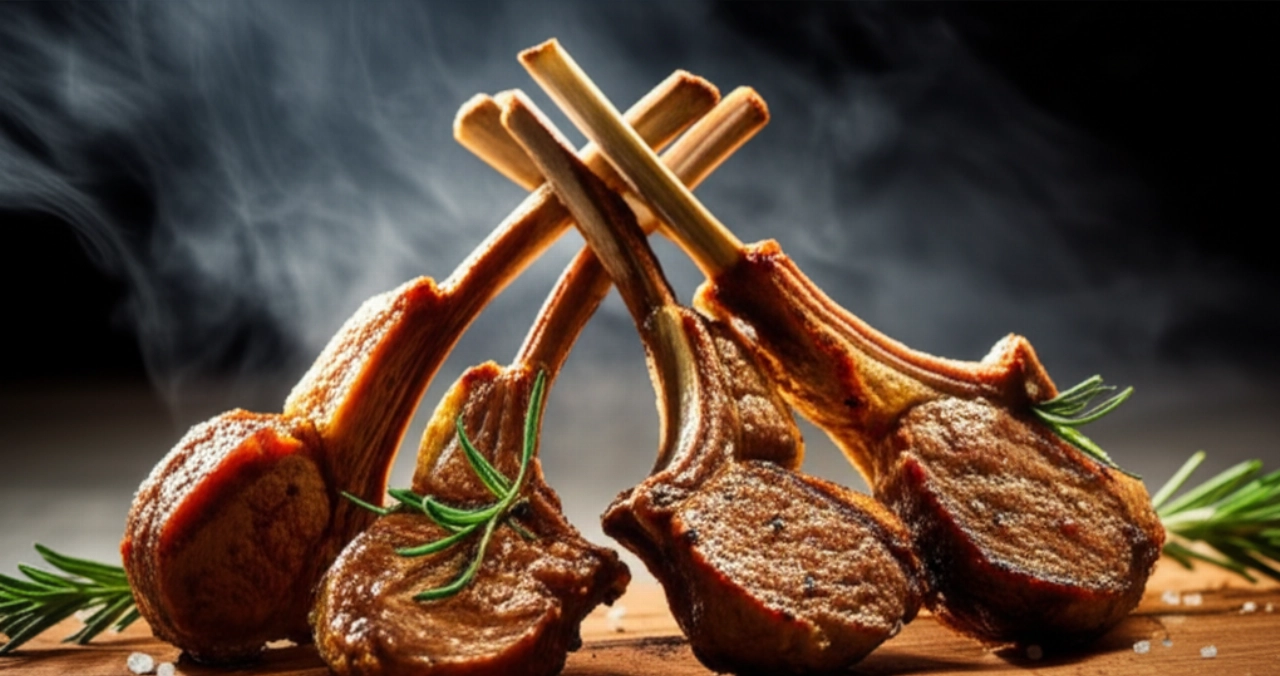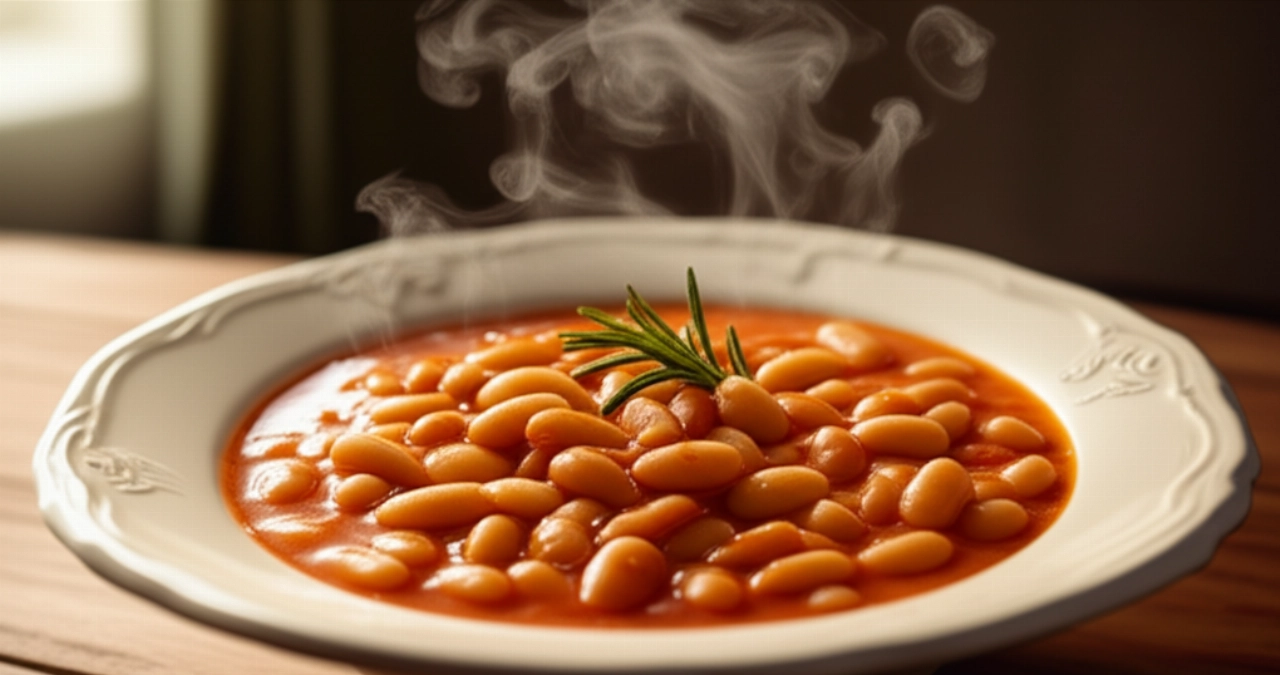Dreaming of serving Roman-style artichokes so tender they melt in your mouth, fragrant with Roman mint and garlic, with that authentic flavor that takes you straight back to Rome?
But how many times have you tried to make them and they turned out tough, fibrous, or bland? Or perhaps you felt overwhelmed by the cleaning process and the fear of making a mistake, ending up giving up on this masterpiece of Lazio cuisine?
Make yourself comfortable. Here you won't just find a list of ingredients, but the definitive guide, full of tricks and practical tips, to prepare the most delicious and tender Roman-style artichokes you've ever tasted. Success is guaranteed, grandma's word!
My mission is to make you feel at home, confident in every step, transforming your kitchen into a temple of Roman tradition. Get ready to receive applause, because these artichokes will be a tremendous success!

Ingredients for Perfect Roman-Style Artichokes: The Choice That Makes the Difference
The quality of the ingredients is the first, fundamental secret for a dish that tastes authentic. It's not just about quantity, but about choosing carefully, just like an experienced grandma would.
- Roman Artichokes (or Mammole): They are the true protagonists! Large, round, spineless, and with a very tender heart. Their seasonality (from February to May) is the best time to enjoy them. If you can't find them, look for round and tender artichokes, but know that the result will be slightly different.
- Garlic: Choose fresh, firm cloves. Garlic is essential for the aroma, but it shouldn't be too overpowering.
- Roman Mint (or Wild Mint): This is the ingredient that makes all the difference, the one that gives Roman-style artichokes their unmistakable aroma. Do not use common mint; it has too strong a scent. Roman mint is more delicate and aromatic. If you really can't find it, a pinch of fresh parsley can help, but it won't be the same.
- Extra Virgin Olive Oil: A good, delicate but fruity EVOO is essential for cooking and binding the flavors. Don't skimp on quality!
- Salt and Black Pepper: Just enough to enhance the natural flavor of the artichokes.
- Lemon: Indispensable for cleaning, it prevents the artichokes from blackening.
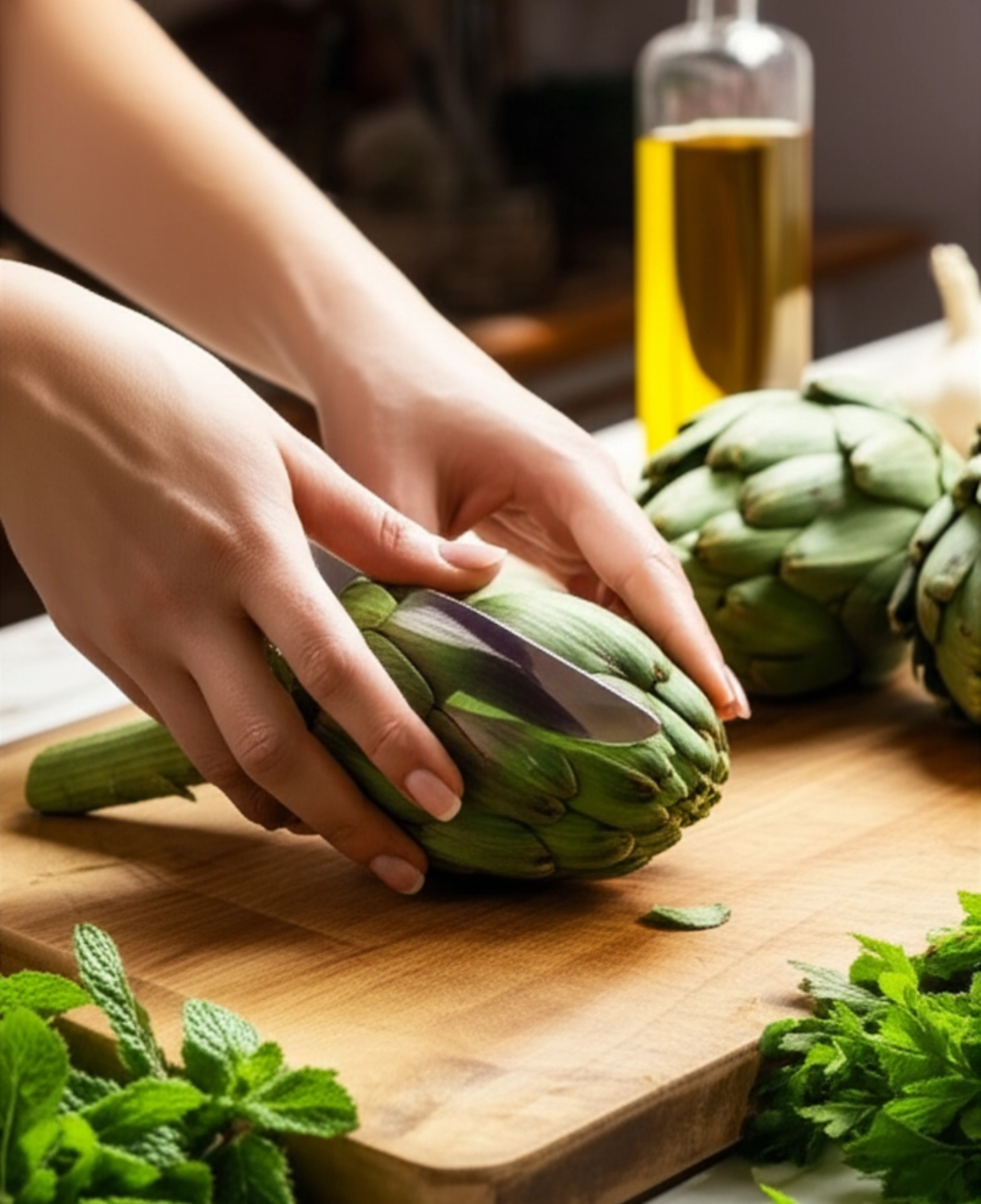
3 Common Mistakes That Make Artichokes Tough (and How to Avoid Them)
Don't worry, it's happened to everyone! But knowing the mistakes allows you to avoid them and achieve perfection.
- Incomplete or Incorrect Cleaning: Many leave too many tough outer leaves or don't properly remove the inner 'choke' (hay). The result? Fibrous and inedible artichokes. I'll show you how to clean them perfectly.
- Insufficient or Too Aggressive Cooking: If they cook too little, they remain tough. If the heat is too high, the water evaporates too quickly, and they burn or don't cook evenly. The key is slow and gentle cooking.
- Not Using Water and Lemon: If you don't immediately immerse the cleaned artichokes in acidulated water, they will oxidize and turn black, losing some of their appeal and flavor.

The Extra Touch: The Tip My Roman Grandma Passed Down to Me
My grandma, a true master of Roman cooking, had a secret for artichokes that few know. Before cooking them, after cleaning them, she would take them one by one and gently tap them on the cutting board, upside down, to make them open slightly and soften the leaves. This small gesture, almost a ritual, allowed the seasoning to penetrate better and guaranteed incredible tenderness. A true embrace of flavor!
Another trick? Arrange them in the pot very tightly together, almost forming a single block. This helps to retain steam and ensures uniform and delicate cooking, like in a small artichoke sauna.
Let's Prepare Roman-Style Artichokes Together: The Step-by-Step Guide
Now that you know the secrets, let's get cooking. I'll guide you step by step, without rushing, for an impeccable result.
1. Perfect Cleaning: The Heart of the Artichokes
This is the most important phase, don't rush!
- Prepare a large bowl with cold water and the juice of one lemon (or two, if there are many artichokes).
- Remove the toughest outer leaves: Remove the darker, tougher leaves, one by one, until you reach the lighter, more tender ones that break off easily.
- Trim the top: Cut off the top of the artichoke (about 2-3 cm) with a sharp knife.
- Clean the stem: With a vegetable peeler or a small knife, remove the tougher outer part of the stem, leaving only the tender, lighter part. You can leave about 5-6 cm of stem.
- Open the artichoke: Gently spread the central leaves with your hands to access the 'choke' (the inner fuzzy part). With a teaspoon or the tip of a knife, completely remove the choke.
- Immerse immediately: As you clean each artichoke, immediately immerse it in the bowl with water and lemon to prevent it from blackening.
- The 'Tapping' (grandma's secret): Once cleaned, take each artichoke and gently tap it upside down on the cutting board to open it slightly.
2. The Aromatic Filling
While the artichokes rest in the water, let's prepare the very fragrant filling.
- In a small bowl, finely chop the garlic (one clove for every 2 artichokes, depending on taste) and fresh Roman mint.
- Add a pinch of salt and a grind of black pepper.
- Drain the artichokes from the water and gently pat them dry with a clean cloth.
- Stuff each artichoke: Fill the inside of each artichoke with the chopped garlic and Roman mint mixture, pushing it well between the leaves.
3. Perfect Cooking: Slow and Fragrant
This is when the magic happens.
- Choose a tall, narrow pot, so that the artichokes are tightly packed together, upside down. This is crucial for even cooking.
- Pour a generous drizzle of extra virgin olive oil into the bottom of the pot.
- Arrange the artichokes: Place the artichokes in the pot, one next to the other, with the stem part facing upwards.
- Add a pinch of salt and pepper over the artichokes as well.
- Pour cold water into the pot until it covers about half of the artichokes (or a little more, depending on their height).
- Cover the pot with a lid and bring to a boil over medium-high heat.
- As soon as it boils, lower the heat to minimum and let them cook gently for about 30-45 minutes, or until the artichokes are very tender. You can test them by piercing with a fork: if it slides in easily, they are ready!
- Halfway through cooking, you can baste the artichokes with the cooking liquid to keep them moist.
- Once cooked, turn off the heat and let them rest in the pot for a few minutes before serving.
Tips and Frequently Asked Questions about Roman-Style Artichokes
Here are some answers to the questions I'm most often asked, to clear up any doubts.
Which artichokes to use if I can't find Romaneschi?
If you can't find Roman artichokes (or Mammole), you can opt for round and tender artichokes, such as the violet artichokes of Sant'Erasmo or the artichokes of Paestum. The important thing is that they are fresh, firm, and have few thorns. The cleaning will be similar, but the flavor and consistency might vary slightly.
Can I prepare them in advance?
Absolutely yes! Roman-style artichokes are even better if prepared in advance and left to rest, because the flavors settle. You can prepare them the day before and gently reheat them before serving, perhaps adding a drizzle of raw olive oil.
How to store leftover Roman-style artichokes?
You can store cooked artichokes in an airtight container in the refrigerator for 2-3 days. They can be enjoyed cold (they are delicious!) or gently reheated in a pan with some of their cooking liquid.
Why are my artichokes bitter?
Bitterness can depend on several factors: artichokes that are not very fresh, incomplete cleaning (if you haven't properly removed the choke or the tougher, bitter leaves), or cooking too quickly which didn't allow the bitterness to mellow. Make sure to carefully follow the cleaning and slow cooking steps.
Can I bake them instead of cooking them in a pot?
Traditional pot cooking, upside down and with little water, is what guarantees maximum tenderness and authentic flavor. Baking tends to dry them out a bit more. If you really want to try, cover them well with aluminum foil and add vegetable broth to the bottom of the pan to maintain moisture, but the result will not be the same as the original recipe.
A Masterpiece of Flavor and Tradition
There you have it! Now you no longer just have a recipe, but all the secrets to bring Roman-style artichokes to your table that taste of tradition, spring, and love. A side dish, or a light main course, that will make you feel like a true Roman chef, even if it's your first time preparing them.
Don't be afraid to challenge yourself. Cooking is a journey of discovery and passion. And with this guide, success is guaranteed. Get ready to receive compliments and see your guests ask for seconds!
Have you tried our recipe? We are very curious to see your masterpiece! Leave a comment below, tell us how it went, or share a photo on Instagram by tagging @CercaRicette.it. If you loved these artichokes, you can't miss our recipe for Saltimbocca alla Romana or for a perfect first course like the Original Cacio e Pepe.
